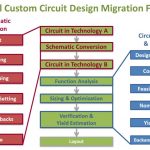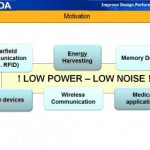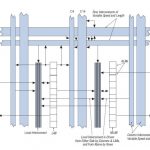For the latest incremental improvements to its Riviera-PRO functional verification platform, Aldec has turned to streamlining random constraint performance. The new Riviera-PRO 2016.02 release also is now fully supported on Windows 10 and adds a new debugger tool.… Read More
Tag: optimization
Post-making new Things stand out on the IoT
Sales says this next IoT project is going to be huge. Engineering isn’t so sure. Marketing says we should pilot it to find out. If it were just software, it might not be such a problem, but with hardware comes investment tradeoffs. Without guaranteed volumes of millions of units, are ASICs a realistic option to hit aggressive size,… Read More
New CEVA X baseband architecture takes on multi-RAT
What we think of as a “baseband processor” for cellular networks is often comprised of multiple cores. Anecdotes suggest to handle the different signal processing requirements for 2G, 3G, and 4G networks, some SoC designs use three different DSPs plus a control processor such as an ARM core. That’s nuts. What is the point of having… Read More
IoT chipsets and enterprise emulation tools
When most people talk about the IoT, it is usually all about wearables-this and low-power-that – because everyone is chasing the next huge consumer post-mobile device market. Mobile devices have provided the model. The smartphone is the on-ramp to the IoT for most consumers, with Bluetooth, Wi-Fi, and LTE, and maybe a dozen or … Read More
How MunEDA Helps Solve the Difficulties of AMS/RF IP Reuse
Reusing design IP is crucial for competitiveness. The need for reuse occurs with new designs on the same process node as the original design, new designs at the same node but using a different PDK or foundry, or designs on a different process node – usually smaller. However, achieving effective IP reuse has always been a challenge.… Read More
Unlock the Key to Ultra-Low Power Design
We have been hearing about low power for a long time. Fortunately, low power chip operation has come about through a large number of innovations. Key among these is clock gating, frequency and voltage scaling, managing leakage with lower threshold voltage, HKMG, and many other techniques. But we are entering the age of ultra low… Read More
DDR stands for Don’t Do (Just) RTL
In optimizing SoC design for performance, there is so much focus on how fast a CPU core is, or a GPU core, or peripherals, or even the efficiency of the chip-level interconnect. Most designers also understand selecting high performance memory at a cost sweet spot, and optimizing physical layout to clock it as fast as possible within… Read More
Chips and pins and layers within
After teams sweat the details of SoC and industrial design, they turn to printed circuit board designers for magic. Here are a pile of chips and passives, and a schematic for interconnecting them. This is how much physical space the board can occupy. Connectors have to be here, and here, and mounting holes there, and there. There … Read More
WLAN Design Optimization at Lantiq
Right now I’m typing on my MacBook Pro computer connected to the Internet through WiFi, thanks to the electronics in both my laptop and WiFi router. I kind of take WiFi for granted because it is so ubiquitous throughout my daily life, yet there are IC designers at companies like Lantiq Semiconductorthat have to design and optimize… Read More
Transistor-level Sizing Optimization
RTL designers know that their code gets transformed into gates and cells by using a logic synthesis tool, however these gates and cells are further comprised of transistors and sometimes you really need to optimize the transistor sizing to reach power, performance and area goals. I’ve done transistor-level IC design before,… Read More








